
Nursing is an extremely noble and respected profession that has changed over the past century. It is constantly evolving to adapt the changing needs of the healthcare environment. Be it the battlefield that led the war, to modern day hospitals, nurses have been the front and center of medical innovation and patient care. In this blog post, we have shortlisted 25 famous nurses from history who have transformed and reshaped healthcare. Here's an in-depth dive in their legacy and lives highlighting on how they have shaped their world with their care, compassion and commitment.
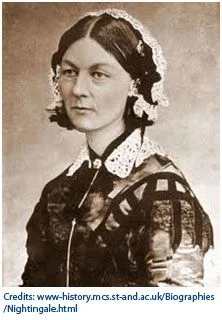
Founder of Modern Nursing (1820 to 1920) The history of modern nursing started in 1849, when Florence Nightingale began her first formal nursing training at the Institute of St. Vincent de Paul, in Alexandria, Egypt. After further trainings in Germany and in France, she voluntarily served as Superintendent at the Establishment for Gentlewomen during Illness in London. The knowledge and skills Nightingale gained from these experiences equipped her to take the challenges in tending to the British military victims when the Crimean War broke out on 1854.
The British medical facilities were in dire need of improved sanitary conditions when Florence Nightingale and 38 nurses entered the military hospitals in Scutari. Wounded and sick soldiers had to share with vermin and go through unhygienic operations, resulting to cholera and typhus epidemic, as well as quick spread of other diseases. Mortality in military hospitals was 7 times higher than in the actual battlefields, but dropped with Nightingale's help. She introduced multiple sanitary items such as surgical caps. Using her mathematical competency, Nightingale collected data and made calculations on mortality rate change as sanitary methods were incorporated in the medical facilities, and soon pressed in all British military hospitals. The statistical data she used, the coxcombs as called by her, is now known as Polar Area Diagram
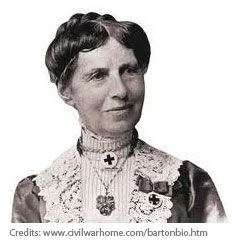
Founder of American Red Cross (1821 to 1912) Clarissa Harlowe Barton was a teacher when her feet directed her to tread the more risky life of bringing supplies right in heart of battlefields during the American Civil War, wherein she was rightfully known as the Angel of the Battlefield. Clara's nursing journey and philanthropic life dawned amid the dark Baltimore riots, organizing relief program for the soldiers. The need for medical supplies was huge and advertising for donations greatly helped. Not long after successful relief operation, Clara Barton travelled with army ambulances to distribute supplies, nurse victims, give them comfort, and even cook for them. She also helped locate missing men and notify families of their status; an activity that ushered the Red Cross tracing services to the humanitarian scene.
The job for Clara Barton in the American Civil War unfolded as a long start for an even longer humanitarian service, this time serving not just to warzone victims but also to the disaster victims as the American Red Cross advances to becoming a reality. Soon after the establishment of the organization, relief efforts will have to be brought outside the soil of the United States, seeing no differences of colors and races at all. This also led to the expansion of International Red Cross relief efforts, covering victims of natural disasters, called the American Amendment. They were just adamant of carrying nurse kits with them all the time to be of any help whenever required.
Barton served the American Red Cross until 1904, and established National First Aid Association of America, wherein she was honorary president for 5 years. And in the 12th of April, 1912, Clarissa Harlowe Barton died.

Founder of the New Model of Rural Health Care & Frontier Nursing Service (1881 to 1965) Mary Breckinridge came from an influential family and enjoyed a privileged childhood. Unfortunately, though, her 2 own children did not endure childhood. This was the most notable accounts of Mary Breckinridge that are associated with her decision to dedicate her life in improving health of poor women and children in rural areas of America.
Breckinridge became a registered nurse 1910 at St. Luke's Hospital School of Nursing in New York, worked as public health nurse in Boston and Washington D.C., served as nurse during World War I in France through the American Red Cross, and furthered her study at Columbia University after WWI. She then focused on the poor areas in Kentucky, where she's rooted. She looked into the health status of those living in inaccessible areas with no physicians. Mary found high maternal mortality due to lack of prenatal care, having many children, and no trained mid-wives. These problems brought her to London to become nurse-midwife, and came to Scotland to learn effective community midwifery system for the poor.
After equipping herself for the challenging nurse-midwife job to the rural America, Mary Breckinridge began serving in Kentucky in 1925, wherein she introduced the new system of rural health care. In that same year, she established Frontier Nursing Service, providing care for low service fee. With the latest nursing supplies of that time, she helped provide best medical care to individuals. In areas covered, maternal and neonatal mortality rates significantly dropped. FNS is still serving mothers and children down to this very day.
THE REFORMISTS

Brain of First Mental Asylum in the U.S. (1802 to 1887) Dorothea Lynde Dix was not an excellent nurse in the very sense of nursing. However, the reputation as a famous nurse was earned by her fearless fight for the right of the mentally ill in front of Massachusetts legislators and of the United States Congress. Dix found herself in this battle due to her passion for teaching. She saw with her own eyes the dismal conditions of the mentally disabled people when she entered the East Cambridge Jail to teach Sunday class for women inmates on March 1842. Dix immediately brought the matter to courts, wherein she won many battles using careful and extensive data of extreme conditions in jails and almshouses, getting these poor individuals improved states.
Dorothea Dix continued to win support, enabling her to acquire funds set to provide the insane more humane conditions. But when she brought her advocacy to the national scene, President Franklin Pierce vetoed her almost successful effort to get a facility of 5 million acres for the people with mental disability, which was already approved by both houses of the United States Congress. This failure never stopped Dix from speaking for the disadvantaged. Even with a frail health condition, due to tuberculosis, she pushed the same efforts to different countries in Europe. She made notable changes in the way insanity was treated in the European soil in just 2 years. With high quality scissors and hosiery, Dorothea Dix made a remarkable impact in the nursing field.
On her return to the U.S. on 1854, Dix carried on with what she left behind. However, when the civil war broke, she had to devote her time as Superintendent of Union Army Nurses. And in 1881, the Trenton state hospital, in New Jersey, was built through her efforts. Her remaining years were spent there until she died on the 17th of July, 1887. The first advocate died, but the benefits of her efforts reached even the mentally ill of this day.

Founder of Planned Parenthood (1879 to 1966) Margaret Louise Higgins blamed the premature death of her mother to the frequent pregnancy, the result of what she viewed as grim class and family heritage. Nursing became her door to liberation from this big family tradition. As she worked as a visiting nurse, Margaret, who was then married to William Sanger and a mother of 3, became attracted to women's pain of frequent childbirth, miscarriage, and abortion. She sought to liberate these women from the unwanted pregnancy by advocating for the practice of birth control.
Margaret Sanger wrote about education and women's health, aiming to teach people that access to accurate and effective birth control is actually a right, particularly of the working women. However, the conservative American society considered this effort obscene. She had to flee to England due to her radical advocacy, which she promoted through Family Limitation and The Woman Rebel, her writings of explicit instructions of various contraceptive methods. While in Europe, she broadened her arguments with the social and economic impacts of pregnancy.
Margaret Sanger returned to the U.S. to face charges against her, but also with the goal to win public support. She endured prosecution and arrests, but worked even more in a nationwide scale to promote birth control. In 1916, she opened the very first birth control clinic in America. However, Sanger and her staff were arrested, and the government gave the physicians the right to disseminate contraception information only for medical reasons. Sanger used this to legally open doctor-run birth control clinic Birth Control Clinical Research Bureau, all staffed with women medical personnel. In 1921, Sanger sought support from the medical profession and backed her advocacy with clinical advantages. 8 years later, she lobbied for birth control legislation and failed. In 1928, she resigned as president of American Birth Control League, and journeyed to Asia and Europe to further her advocacy. She also helped found the International Planned Parenthood Federation in 1952, which happened after World War II, wherein the growing population became alarming.
Sanger continued to support researches for simpler, cheaper, and more effective contraceptives. In the 1965, birth control pills finally became available. And in 1965, the Supreme Court made birth control legal for married couples.

Started the System of Nursing Registration (1846 to 1926) Elizabeth Grace Campbell Neil received her nursing education at the St. John's House Sisterhood in London. She spent her early nursing career as lady superintendent at the Pendlebury Hospital for Children in Manchester, where Ms. Campbell met her husband Channing Neil. She left England for Australia in 1886, and then, treaded a life of a journalist and various government commissions for almost 10 years in New Zealand beginning 1891. She was a determined nurse with a stethoscope on her neck at all times.
Neil was back in health care upon the establishment of the New Zealand's Department of Health, creating a nursing service. 1901 came, and Neil got the privilege of helping draft a bill aimed to protect the public from nursing malpractice for New Zealand Parliament, one that became the world's first Nurses' Registration Act. Soon after, the Midwives' Registration Act was passed and Neil was given the task of setting up the very first state maternity hospital, the St. Helen's Hospital, which opened in 1905 and followed by 3 more in a span of 2 years.
Elizabeth Grace Neil's thorough knowledge of the technicalities of nursing profession made her a crucial personality in the international nursing politics. But on 1906, she fell ill and was forced to step down from her active involvement in the British Matron's Council. And on August 18, 1926, Elizabeth Grace Neil passed away.
THE CHALLENGERS OF RACIAL PREJUDICE
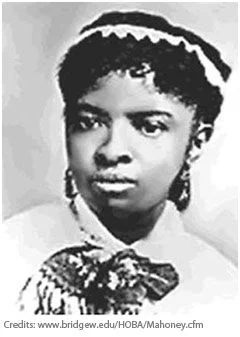
First Registered African American Nurse (1845 to 1926) At her teens, Mary Eliza Mahoney began having interest in nursing. That interest led her to New England Hospital for women and children, working as cook, janitress, and laundry woman for 15 years. She also served as an unofficial nursing aid, which became a very significant step in her journey of becoming a professional nurse. In 1879, she was finally admitted into the hospital's nursing school, and was one of the only 3 nursing students who made it through the rigorous study and training. From then on, black students were accepted for professional training, a notable change of blacks' status in the nursing field
Mary also intended to introduce proper nursing kits along with medical sleeves and other supplies for the betterment of the nursing industry.
Mahoney officially registered in the Nurses Directory at the Massachusetts Medical Library after graduating. She then embarked in private practice, providing care for patients in the New England area. But becoming a nurse and being able to practice were just parts of Mahoney's journey against racial discrimination. Mary Eliza Mahoney joined the Nurses Associated Alumnae of the United States and Canada, which is now known as American Nurses Association. The discrimination in the association moved Mahoney to co-find the National Association of Colored Graduate Nurses in 1908.
The NACGN became Mahoney's instrument in improving status of black nurses in the profession nationwide. She also devoted her life to the Howard Orphan Asylum for Black Children as director and national chaplain. In 1922, Mahoney retired from NACGN, but continued to be active in its activities until she succumbed to breast cancer on January 4, 1926. The NACGN created Mary Mahoney Award in 1936. Until now, the award is given to black nurses who showed similar achievements as Mahoney with regards to intergroup relations and contributions to improving African-American nurses' status in the profession. Mahoney was inducted into ANA's Hall of Fame as well as into the National Women's Hall of Fame in 1976 and 1993, respectively.

Unofficial Nurse to Crimean War Soldiers (1805 to 1881) Mary Seacole was a free black Jamaican who was, at least 4 times, rejected from providing nursing aide to the British soldiers during the Crimean war because of her color. With the best nursing supplies including nurse kits, she was a daring nurse ready to help people in need. This was despite Florence Nightingale's call for support of nursing. Rejections were the least thing that could stand against Mary Seacole from tending to the wounded British and Jamaican soldiers.
Seacole funded herself and headed for Crimea. Unlike Nightingale, whose hospitals were far from the battlefields, Mary Seacole did her work right where war was taking place. Equipped with no formal nursing training, and only with the healing practice that she learned from her mother and with herbal medicines, she tended to the British soldiers. She also established a facility that provided caregivers, medical attention, food as well as comfortable place for the sick and wounded, all at her expense. For these loving provision and care, she was loved by the soldiers despite her race. When the Crimean War ended, Seacole was broke and ill. Well wishers rallied to her aid, through which she was able to live the rest of her life prosperous.
Mary Seacole was awarded medals for her bravery and unselfish acts. And in 1881, the brave Jamaican nurse passed away.
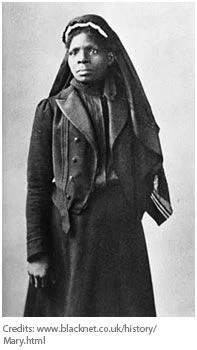
First African-American U.S. Army Nurse in Civil War - (1848 to 1912) Susie Baker King Taylor, daughter of slaves, was freed by their owner Mr. Grest by sending her to her grandmother Dolly Reed in Savannah. While with her grandmother, Susie learned how to read and write with the help of some friends. When Civil War broke, Susie, who was then 14 years old, fled to St. Simons Island with her uncle. They were taken under the custody of Union Forces that was then enlisting black soldiers for a new regiment. She was assigned as laundrywoman, but within days became teacher to freed African-American students through the help of some soldiers as well.
From being a laundrywoman and teacher, King also became a nurse, tending to the colored soldiers that have been fighting for freedom along their side. The memoirs of her life can be read in the Reminiscences, the story of her experiences in camp with the 33rd United States Colored Troops, which she wrote and published in 1902. Ten years after publishing her memoirs, Susie King Taylor died at the age of 64.

Led Battle to End Racial Prejudice in Nursing (1890 to 1989) Color was the greatest obstacle that had to be faced by every black aspiring to become nurse in the early years. Like Mary Eliza Mahony, Mary Seacole, and Susie King Taylor, Mabel Staupers had to win over her skin color. Mabel Staupers fought hard to finally and fully integrate black nurses into the nursing profession in the U.S., at the time wherein every available medical aid was badly needed, during the Great Depression and World War II.
Mabel Staupers started nursing with noteworthy qualifications as she graduated with honors from the Freedmen's Hospital School of Nursing in Washington D.C. in 1917. Staupers became surveyor of health needs before she was given a significant position as executive secretary for the Harlem Tuberculosis Committee, a Tuberculosis and Health Association unit in New York, in 1922. As surveyor, she saw more clearly the wide disparity between black and white, with regards to both access to equitable healthcare services and treatment of black nurses in her profession's organizations such as the American Nurses Association and National League of Nursing Education. When she became executive secretary of the National Association of Colored Graduate Nurses for 12 years, Staupers built a more stable platform for black nurses in the profession by forming coalitions both in nursing and non-nursing communities.
Her efforts to bring end to racial discrimination among nurses paid off when the government integrated black nursing in the U.S. Army Nurses Corps after Pearl Harbor. Staupers continued her fight to liberate colored nurses even after war, successfully gaining full membership for black nurses in the ANA, only 2 years after her resignation from the NACGN, which was also dissolved in 1949. Like Mahoney, Mabel Keaton Staupers also became ANA Hall of Fame inductee, 7 years after her death on November 29, 1989.

The Soujourner Truth (1797 to 1883) Born a slave, Isabella Baumfree paddled the cruel truth of black enslavement in the land of white people, and fighting for freedom became the very essence of her journey. Isabella Baumfree, renamed herself as Soujourner Truth, literally travelled across the country, speaking before crowds speeches that have so much to do with abolishing slavery and the advocacy for women's rights. Backed with religious faith and belief of equality in the creator's eyes, Isabella fought alongside groups of abolitionists for freedom from slavery. Her first success was regaining custody of her son Peter through the court of New York. Through her efforts, many Africans were freed from their masters.
Aside from advocating equality in race and in gender, Soujourner Truth also served as nurse in the Union Party in the Civil War for the hopes of liberation. First, her task was to enlist black soldiers. In 1864, Truth went to a government refugee camp in an Island of Virginia. She was also employed at the National Freedman's Relief Association, in Washington D.C., wherein she met President Abraham Lincoln. Truth continued to work for the association to be able to extend hand to her fellow former slaves.
After the Civil War, Soujourner went back to fighting for the rights of black people, this time campaigning land ownership for the former slaves. In November 26, 1883, Isabella Baumfree died at the age of 86.

First African-American Chief of the Army Nurse Corps (1927 to Present) Named as the first African-American Brigadier General of the Army Nurse Corps in 1979, Hazel W. Johnson-Brown apparently reached the most honorable rank when she was appointed as the chief of the ANC. She then commanded 7,000 men and women in the Army National Guard and Army Reserves, and overseeing numerous medical centers, free-standing clinics, and community hospitals in Germany, Italy, Japan, Korea, Panama, and the United States.
Brig. Gen. Hazel W. Johnson-Brown's military success started with apparent prejudice, when she was rejected of enrollment at the West Chester School of Nursing. This was the obstacle that she wanted to overcome. Hence, she went off for New York City in 1947, and was admitted in the Harlem Hospital School of Nursing. Her first professional work was at the Philadelphia Veteran's Hospital, but enlisted into the Army Nurse Corps in 1955 with the encouragement of colleagues. Hazel swiftly rose from the ranks, accumulating impressive credentials from different positions she held, and finally got to the pinnacle of her career as Chief of ANC, with the rank of Brigadier General.
After enjoying success in the military service, Brig. Gen. Johnson-Brown retired from the army in 1983. She journeyed to her second career in academia as professor of nursing in Washington D.C.'s Georgetown University, and in Virginia's George Mason University as instrument to founding Center for Health Policy. When she retired from teaching in 1997, Brig. Gen. Johnson-Brown serves different health administration boards in the Washington area.
CHAMPIONS OF MODERN NURSING
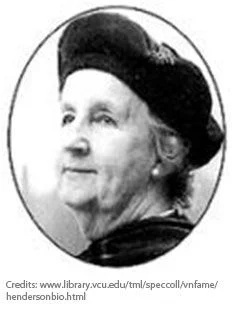
Developed the Nursing Theory (1897 to 1996) Known as the first lady of nursing, Virginia Avenel Henderson can be considered as the most famous nurse of the 20th century, with all her contributions and influence to American and international nursing education, practice, research as well as its implications. She was the woman behind the development of nursing theory, carefully and clearly defining the roles of nurses in health care. Henderson's theory that nurses should aid everyone, sick and well, in the quest for better overall health or peaceful death is recognized as a major contribution to the nursing practice.
Virginia Henderson owed her success to the privilege of being thought and trained in the Army School of Nursing, and the Teachers College in Columbia University for her B.S. and M.A. degrees. She spent her first years in the profession as public health nurse at the Henry Street Settlement as well as in the visiting nurse service in Washington D.C. Henderson also became the first full-time nursing instructor at the Norfolk Protestant School of Nursing, and a very active member of the Virginia Nurses Association. While in the teaching profession, Henderson pushed for the inclusion of psychiatric nursing in Virginia State's nursing education in 1929.
Several of Henderson's published works are being widely used as nursing textbook and source for basic and in-depth knowledge of nursing. The life of Virginia Avenel Henderson ended with her death on March 19, 1996, but her significance continues to live in the profession. Henderson was the first recipient of Christiane Reimann Prize in 1985.
International Council of Nurses' First Full Time Executive Secretary (1887 to 1979) The prestigious Christiane Reimann Prize, which has been awarded to just a very few achievers in the nursing field yet, was named after her. Christiane Reimann was a Danish born woman who received her nursing degree at the Copenhagen's Bispebjerg Hospital in 1916. And in 1925, only 9 years later, she became the very first paid full time executive secretary of the International Council of Nurses.
Christiane Reimann was an accomplished nurse, who unselfishly tapped from her own funds to further ICN's goals. Not only did she generously shared monetary funds to the ICN, but also served as the brain behind many key ICN programs, among which is the council's official journal International Nursing Review. Reimann also spent her energy travelling the world to seek more national nurses' associations to join the international council, and enable the principles of ICN to be integrated in nursing practice in different countries. The fruitages of her efforts were priceless. It stimulated many of the countries she visited to establish educational programs for nurses. Others having no NNA yet, like China, were motivated to build their own.
Reiman served as ICN's executive secretary until 1934, and spent the rest of her years in this world living a much simpler life at her farm in Syracuse, Italy. And on 1979, Christiane Reimann faced death at the age of 92.
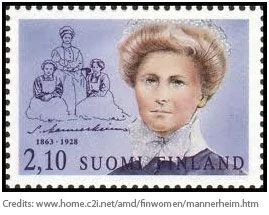
The Baroness & Instrument to Finland's Modern Nursing (1863 to 1928) A fruit of modern nursing founder Florence Nightingale's school at St. Thomas Hospital, in London, Sofia Sophie Mannerheim utilized her gained nursing knowledge and skills in her own country, Finland. Before journeying into the world or nursing, though, Sophie first worked as a bank employee for 6 years, and got into an 8-year long marriage in 1896.
Mannerheim's divorce gave her the opportunity to enter Nightingale's school. When back in Finland, she was given the responsibility of a head nurse of Helsinki Surgical Hospital. Later on, she became president of the Finnish Nurses Association, which she handled for 24 years. Her success in the nursing field extended to the international community when she was elected president of the International Council of Nurses or ICN. Her accomplishments also included co-founding of Helsinki's Children's Hospital, and of the Mannerheim League for Children's Welfare.
Sofia Mannerheim, a baroness who came from a noble family and sister to former Finnish President Carl Gustaf Mannerheim, died on September 1, 1928.
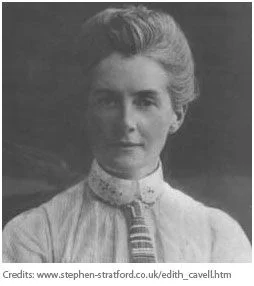
Belgium's Nursing Pioneer & Nurse Hero (1965 to 1915) Edith Louisa Cavell served the Red Cross in the face of death during World War II. Cavell, a British nurse was matron of the Brussel's Berkendael Institute, which was then converted into Red Cross hospital, when Central member country Germany invaded Belgium. Her duty was to care for patients, regardless of their nationality, not looking into whether they were from the Central or Allied Forces. But her patriotism, which became more evident in carrying on her duty led to her apparent death.
During her trial, Edith Cavell admitted of helping 200 soldiers, whom she thought were still capable of reuniting with the Allied forces to fight. Wounded Allied soldiers were treated and helped escape to the neutral Holland, along with other non-wounded men. Only a tattered postcard sent as sign of gratitude by a British soldier, and her confession, served as evidence against Cavell. At the dawn of October 12, 1915, Edith Cavell, still in her nursing uniform, and an aide named Philippe Baucg were executed through firing squad at the outskirts of Brussels for treason
The death of Nurse Edith Cavell awakened patriotism among members of the Allied forces. Instead of becoming weak, recruitment of Allied soldiers doubled in just a matter of 2 months.
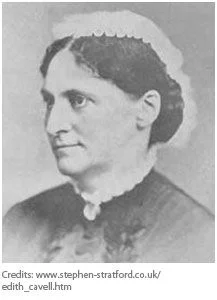
The First Trained American Female Nurse (1841 to 1930) Malinda Anne Judson Richards, America's first trained female nurse was moved to enter the nursing profession due to the death of her parents from tuberculosis. Although she already got informal training from her mother's physician, Richards pursued teaching. It was only after the death of her fianc from the Civil War that she finally decided to become nurse, and worked at the Boston City Hospital. After serving barely as maid in the hospital, Richards signed-up for a nurse-training program at the New England Hospital for Women and Children, and graduated in 1873.
The New York City gave Richards opportunity to prove her worth in the profession, being able to develop the system of keeping records of each patient at the Bellevue Hospital. Significantly, her concept was widely integrated in the U.S. and England, including Florence Nightingale's St. Thomas Hospital where she later on furthered her nurse training. She also went to King's College Hospital and Edinburgh Royal Infirmary in Scotland for added training and education. In 1874, Richards came to be the superintendent of Boston Training School who turned the then dying nurse-training program into one of America's best, with all the nursing knowledge that she brought with her when she came back in 1877. After 9 years, Richards had gone off to Japan where she opened Japan's first nurses training school in Kyoto during her 5-year missionary service there.
At the age of 51, Linda Richards went back to the U.S. and held leadership roles in Philadelphia Visiting Nurse Society and superintendent of 2 other training schools. In 1892, Richards was also able to establish training school at the Philadelphia Methodist Episcopal Hospital and reorganized the nursing training program in the New England Hospital for Women and Children in 1893 to 1894. She also served as president of the American Society of Superintendents of Training Schools, member of the Hospital Economics Program Committee at the Teacher's College, Columbia University, director of training schools at the Taunton Insane Hospital in Massachusetts, Worchester Hospital for the Insane, and Michigan Insane Asylum. Further, Richards was the first stockholder in the American Journal of nursing. Her nursing and teaching career ended on her retirement on 1911. In April 16, 1930, at the age of 88, Linda Richards died. In 1976, Richards became ANA Hall of Fame Inductee.
THE WAR NURSES
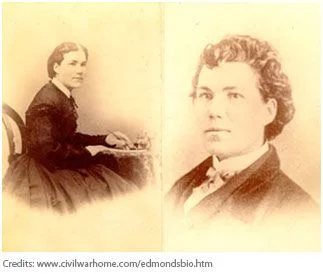
The male nurse (1841 to 1898) Being male was not a dream for Sarah Emma Edmondson, but a life she had to live since childhood to escape mistreatment from her father and to be able to serve her adopted country, the United States of America. Emma left New Brunswick, her homeland, to flee her abusive father who wanted a son, not a daughter. She was in New England, when she answered the call for Union enlisters. After four tries, Emma succeeded to enter the Union Army as Private Franklin Flint Thompson, a male nurse in the Civil War.
Franklin Thompson began serving at the hospital unit of the 2nd Michigan Volunteers on April 25, 1861. Emma had no problem maintaining masculine masquerade since she's been doing it almost all her life already. But with the death of James Vesey, a friend back in Canada, on patrol, and the need of intelligence agent for McClellan changed Emma's life forever. She volunteered and impressed the staff with all the things she gained knowledge of by herself about weaponry, tactics, local geography and military personalities. Even without any military experience, Frank (Emma) got the position as spy of the Union Army.
Emma crossed the enemy lines as a black man named Cuff, with her skin tainted with silver nitrate and head with a black minstrel wig. She again infiltrated the Confederate lines as Bridget O'Shea, an Irish peddler woman. She also spied as a mammy, complete with dark color and bandanna. Emma also became Charles Mayberry, a young man, to identify Southern spy network. These and all 11 missions as spy, Frank Thompson succeeded. But malaria forced her off the camp to keep her identity from being revealed while seeking treatment. However, after recovery from a hospital in Cairo, Illinois, when she was again ready to carry on her duty as Frank Thompson, the Union Army has declared her male identity as a deserter.
There were no more secret missions for Frank Thompson, so she went back to Washington and worked as a nurse until the end of the Civil War. Sarah Emma Edmondson a.k.a. Private Frank Thompson shared her adventures and experiences in her book, Nurse and Spy in the Union Army, which became best selling. She headed home to Canada and became Mrs. Emma Seelye. Emma petitioned to clear her name from being a deserter in the Civil War, and on July 5, 1893, granted honorable discharge from the army, along with monthly veteran's pension. Emma Edmonds Frank, died honorably on September 5, 1898.

Founder of the Army Nurse Corps (1851 to 1929) Known as the American Florence Nightingale, Anna Caroline Maxwell bravely cared for wounded men, improved sanitary conditions of military hospitals, and trained nurses for care during the Spanish-American War. Her intelligence and experience from years in the nursing profession equipped Maxwell for the enormous task during this chaotic time.
Anna Maxwell started off at the Training School of the Boston City Hospital in 1876. Five years later, she assumed leadership of the Boston Training School for Nurses, and in 1889 shared her knowledge to the students at St. Luke's Hospital. Maxwell's academic success reached the New York City, when she developed a nursing program for the area's Presbyterian Hospital. She remained 30 years with the school, presiding over its partnership with Teachers College, which is now known as the Columbia University. There, she was able to develop 5-year nursing diploma as well as a Bachelor of Science Degree
When the Spanish-American War broke, Maxwell's nursing mastery became an extremely reliable arm against deaths caused not by combat but by communicable diseases. Even amid typhoid, malaria, and measles epidemic among a thousand soldiers, only 67 lives were lost under Maxwell's supervision. With the persistence of Maxwell, the congress finally recognized the value of nurses in the military, resulting to the establishment of the Army Nurse Corps in 1901, and by 1920, nurses were also given military rank. Maxwell also served the military during the World War I, which began in 1914, through the Red Cross. Her WWI service also gained her recognition from the French government. Maxwell resigned from the nursing service in 1921, and died in 1929.
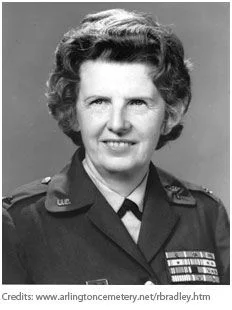
Most Decorated Woman in US Military (1907 to 2002) Col. Ruby Bradley of the Army Nurse Corps was the most highly decorated army nurse, receiving 34 medals and citations of bravery for her military service during the Japanese and Korean War, on World War II. Her awards included Legion of Merit Medals, Bronze Stars, Presidential Emblems, WWII Victory Medal, U.N. Service Medal, and Florence Nightingale Medal.
Bradley began her service in the Army Nurse Corps as surgical Nurse in 1934. Her risky service followed on 1941, while assigned at Camp John Hay, Philippines. Only three weeks after the Japanese attacked Pearl Harbor, Bradley was captured, and tended to fellow captives after being moved to Santo Tomas Interment Camp on 1943, in Manila. There, she and several other nurses were given the name Angels in Fatigues for feeding starving children and risking their lives in smuggling surgical equipments into the POW camp so as to provide medical aid. The U.S. Army liberated Bradley and the rest of the captives from the Japanese three years later, and then, she headed back home to West Virginia. However, military service has not yet ended in the Philippines for Bradley. She went back to the battlefield as chief nurse of the 171st Evacuation Hospital during the Korean War only after 5 years. In 1951, Bradley became chief nurse for the Eight Army, shouldered the responsibility of supervising 500 Army Nurses all over Korea, wherein she had to face near-death situations while ensuring the sick and wounded were safe. Ruby Bradley managed to escape 100,000 Chinese soldiers holding guns on her back, and ambulance exploding right after she's gone off it.
Col. Bradley's military service lasted three decades, and retired in 1963. Her life ended on May 28, 2002 due to heart attack, but her courage and valor remain.
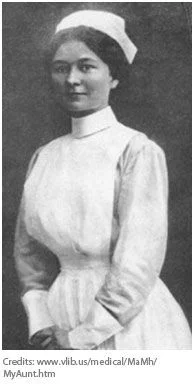
World War I Combat Nursing (1885 to 1918) The battlefield that has become many brave soldiers' grave also led Helen Fairchild to her final destination. But compared to those soldiers who were there to fight and kill, she was in the battlefield with the primary mission of saving lives. Fairchild was one of the 64 nurses who left Pennsylvania Hospital with the American Expeditionary Force to France, in 1917.
Fairchild was immediately sent to the Casualty Clearing Station 4 at the third Battle of Ypress Passchendaele. As a front-line combat nurse, young Helen was exposed to mustard gas, which was used against the Allied Forced during a heavy shelling. Mustard gas has the ability to mimic the effects of chloroform on the stomach. This worsened the abdominal pain that she already had even before leaving the U.S. After every meal, Helen vomited. She was later on diagnosed with large gastric ulcer that obstructed her pylorus. Doctors recommended gastro-enterostomy operation on the 13th of January 1918. Fairchild's operation seemed successful, but became jaundiced on the 3rd day. Her condition rapidly deteriorated, she fell into coma, and died on January 18, 1918.
Nurse Helen Fairchild's short-lived combat nursing carrier endured through history, serving as inspiration to nurses in the military.
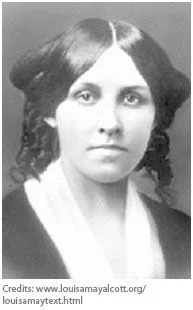
Civil War Nurse, Writer & Poet (1832 - 1888) Louisa May Alcott's service as a nurse during the Civil War was short-lived, only on a winter month between 1862 and 1863. She served at the Union Hotel Hospital in Georgetown, Virginia. However, while in the nursing service, Alcott contracted typhoid pneumonia and forced to go back home to regain good health. She suffered permanent health damage because of the fever and of the calomel dose or mercurous chloride, causing recovery to become long and gradual.
Alcott's nursing career was not as bold as that of other Civil War heroic nurses to be able to be lined among the famous nurses list. However, her experience as nurse, which she wrote in her book Hospital Sketches, published in 1863, made her extremely popular. Moods and Scenes from Dickens were also published, the latter completed to benefit the Sanitary Commission. Alcott became well known through her literary pieces, published more than 30 different books and collections of stories. On March 6, 1888, Louisa May Alcott passed away.

Vietnam War Nurse & Founder and President of Vietnam Women's Memorial Foundation (1946 to Present) Diane Carlson Evans served as surgical nurse in the surgical and burnt unit of the 36th Evacuation Hospital in Vung Tau and in the 71st Evacuation Hospital in Pleiku. Before she treaded the risky life of a combat nurse, she was equipped with knowledge of nursing school in Minneapolis, Minnesota. After graduation, Evans readily joined the Army Nurse Corps. At 21, she was sent to the Vietnam War and served there for 1 year.
Diane Carlson Evans fought for the honor of the women who bravely battled side by side with male soldiers in Vietnam War era. It took 7 years of lobbying before the congress, convincing the legislators to recognize the immense value of 11,000 military women to Vietnam and the 265,000 others in service during the war. In November 11, 1993, the Vietnam Women's Memorial was dedicated. Many American Veterans continue to support the foundation, wherein Evans still actively serves as president.
THE CONTROVERSIAL NURSES
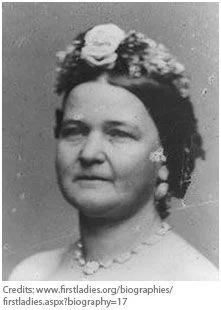
The President's Wife (1818 to 1882) Mary Anne Todd Lincoln, Former President Abraham Lincoln's wife, was better known as a well-educated aristocrat with great interest in politics, which actually helped Abraham to the presidential office. Her witty, sarcastic comments, frenzy spending, and alleged mental illness tore into her rather worthy life as wife of a president.
At one point of her life as first lady of the United States of America, Mary Todd Lincoln showed the compassionate side of her by working as volunteer nurse in the Union hospitals. On April 1861, the Union soldiers decamped at the White House for support of Lincoln's administration, and Mary played a major role of keeping the morale of the soldiers, frequently visiting the wounded soldiers and making rounds to check on their condition. Sadly, though, that person was less noted by the society.
Just as U.S. citizens would think Abraham Lincoln's wife were insane, Mary Todd Lincoln proved a rather notable rationality with her genuine support to abolitionists. Her influence to her husband was of core value for full emancipation of African-American slaves, not merely for political reasons but more importantly as the humane thing that needs to be done. And through the Sanitary Commission and Contraband Relief Association that were established during Lincoln's administration, Mary was able to continue to extend help to the recently freed slaves as well as the Union soldiers, providing them with supplies and support, including medical care.
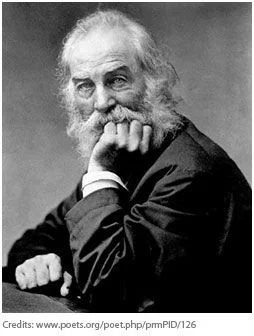
The Egalitarian (1819 to 1892) Born to a working class family, Walt Whitman had to quit formal schooling at the age of 11 and start working as office boy for some prominent lawyers. Walt began self-educating, gaining wide knowledge through visits to museums, nonstop reading, as well as engaging in conversations and debates. He learned a lot about literature, theater, history, geography, music and archeology through his informal education. At the age of 12, he was already contributing to newspapers, and at 15 his first signed piece was published in the New York's newspaper, Mirror. When he reached 17, a destructive fire wiped out the growing newspaper industry, forcing Whitman to teach in the Long Island towns for income. However, teaching made him depressed, and his poetic works bore this feeling of him. Whitman also tried putting up his own newspaper in 1838, with the name The Long Islander, which sadly folded after just a year. This dragged him back to teaching in the Southold, which he abruptly abandoned for fiction writing, real journalism, and poetry, due to the rumors of him committing sodomy. Until now, this rumor hasn't been fully ended because of his close mysterious relationships with men. It seems, though, that his return to Southold and creating unperturbed journalistic pieces suggested that he considered himself temperamentally unsuited for teaching.
It was the Civil War that brought Walt Whitman from being a journalist, teacher and poet into the nursing profession. First, for the purpose of making the wounded patients subjects for his journalistic pieces, Walt's hospital visits turned into genuine concern for this people; perhaps because several of his brothers have enlisted in the Union Army as well, and that his been doing it to visit injured friends for years before the Civil War, informally and personally nursing them. But as the war advanced and thousands of wounded soldiers needed care in Washington, D.C., Whitman assumed the responsibility of a nurse. He even assisted physicians during surgery. That experience was just the tip of an even greater work of tending to wounded soldiers, when he journeyed to look for his brother George Washington Whitman, who also enlisted in the army. The horrific sight of wounded, amputated, and dead soldiers haunted him eternally. Moved by the condition of the disabled soldiers, Whitman voluntarily made himself their legs and arms for the next few years. He continued to nurse soldiers in Washington and Virginia battlefront on February 1864. And in March 26, 1892, Walt Whitman passed away due to tuberculosis.
Poet Whitman is vital in American cultural memory, putting him in television shows and songs. Schools and bridges are named after him. Even parks, truck stops, think tanks, summer camps, apartment complexes, shopping malls, and corporate centers bear Walt Whitman's name.
The history of the 25 famous nurses is a testament to their commitment of driving change and reforms, it is a rich history centered around compassion, courage and commitment to patient care and healthcare at large. Each nurse that we have discussed has contributed significantly to nursing practices and the field of healthcare. They have actually played an important role in establishing that nurses are not just the pulse of healthcare, but they form the base of societal growth. The way they carry themselves inspire the upcoming era of nurses to be resilient, commuted and hardworking. No matter if they are.
Whether addressing global health challenges or providing daily clinical care, the influence of these professionals continues to be felt in every corner of the healthcare industry.
1. Who is the modern day pioneer of nursing?
The founder of modern day nursing is Florence Nightingale. She revolutionized medicine with her modern approach to sanitation, health reforms and education during the era of the Crimean War.
2. Have male nurses contributed to medicine?
Yes, while woman have been predominant, but one male nurse who has played an integral role in healthcare in Walt Whitman, an American poet and volunteer during the American Civil War. He became an advocate for male nurses particularly in military.
3. Did Mary Eliza Mahoney have a profound impact on nursing?
Yes, Mary Eliza Mahoney is considered the first African American licensed nurse. She is known for her unwavering spirit and advocacy of African American nurses making way for inclusive policies in healthcare and nursing schools.
4. Do nurses have an impact on global health policies?
Yes, nurses have a profound impact on shaping public health policies. For this purpose, the service of Lilian Wald and Margaret Sanger has been crucial. Their efforts led to worldwide health initiatives and reforms which is still leveraged by the global population